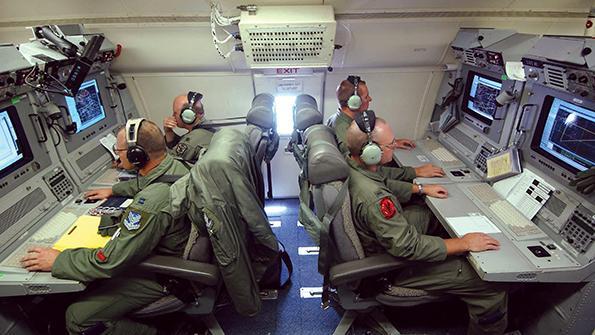
COLORADO SPRINGS — The U.S. Space Force is defining how it will track moving targets from orbit, as the service and the National Reconnaissance Office are in the early stages of building space-based moving target indication satellites.
The Department of the Air Force has made shifting moving target engagement away from aircraft such as the E-8C Joint STARS to orbit a top priority, to conduct the mission in a more survivable and scalable way. Chief of Space Operations Gen. Chance Saltzman says his service’s focus now is starting to define how its personnel will be able to take in the data from the satellites and turn it into actionable targeting information.
“We’re definitely working with the NRO on that mission set,” Saltzman said April 19 at the Space Symposium here. “It’s a nice marriage between their long history of experience with space-enabled remote sensing and our experience with a traditional … mission of providing sensor-to-shooter information for moving target indications.”
The Air Force’s fiscal 2024 budget request includes $841 million in funding for new programs for this mission, along with $3.5 billion in increased funding for existing relevant programs. The new funding will grow to more than $5 billion over the next five years as the capabilities mature.
NRO Director Christopher Scolese said he expects to launch a prototype for ground-moving target indication within the next year, based on prototypes of individual components that are already on orbit.
“We’ve done some prototyping, which is on orbit as we speak, that have demonstrated that technology ... Now we’re in the process of actually going into manufacturing and will start launching within the next 8-12 months,” Scolese said.
Saltzman said the Space Force needs to determine the concept of operations to rapidly pull the targeting data together and disseminate it to “shooters” from the other military services.
“Once we have that con ops in place, I think that will better inform the requirements and then better inform the right programs and systems and demos that will help,” he says.
Lt. Gen. Stephen Whiting, commander of Space Operations Command, said during a separate appearance April 19 that he expects the Air Force’s E-8C model to form a basis for this concept.
“They did that mission where it’s a mix of operators, intelligence professionals, maybe folks from other services and agencies, and I think that’s probably a mix that looks right for us because … there is an operational component but there is an intel component as well,” he said.





